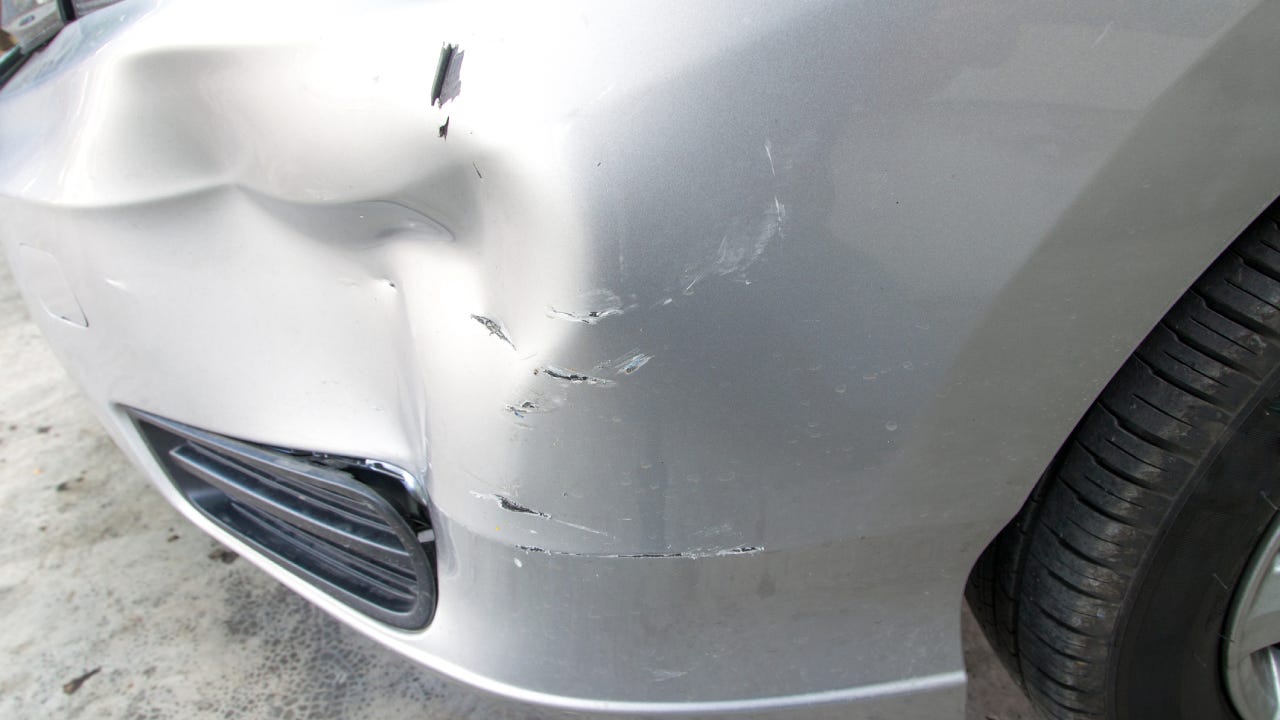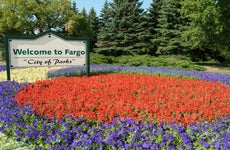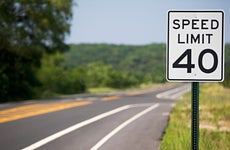Car insurance after a hit-and-run in North Dakota

The Bankrate promise
At Bankrate, we strive to help you make smarter financial decisions. To help readers understand how insurance affects their finances, we have licensed insurance professionals on staff who have spent a combined 47 years in the auto, home and life insurance industries. While we adhere to strict , this post may contain references to products from our partners. Here's an explanation of . Our content is backed by Coverage.com, LLC, a licensed entity (NPN: 19966249). For more information, please see our .
Any accident can be stressful and costly, but hit-and-runs may be particularly difficult to navigate. Because North Dakota is a no-fault state, accidents can affect insurance in ways that may be different than in other locations. The following guide breaks down everything you need to know about hit-and-runs in North Dakota.
Hit-and-runs in North Dakota
In North Dakota, a hit-and-run is defined as a collision involving a vehicle where one or more parties involved does not stop to provide their contact or insurance information. After an accident, all drivers involved are required to stop, render medical aid if possible, call emergency services if necessary, and exchange personal and insurance information with the other driver or drivers.
Hit-and-run laws in North Dakota
In North Dakota, the laws surrounding hit-and-run accidents are designed to hold offenders accountable and ensure justice for victims.
After an accident in North Dakota, the at-fault driver is responsible for the financial fallout of any damage they caused. North Dakota is a no-fault state, meaning every driver is required to carry personal injury protection (PIP), which can pay for their medical bills and lost wages, regardless of fault, up to their policy limit. However, North Dakota does allow litigation for medical expenses in certain instances and up to certain thresholds.
Leaving the scene of an accident in North Dakota comes with significant consequences, especially if there are injuries or fatalities. Here are the key legal requirements and penalties associated with hit-and-run incidents in North Dakota:
- Stop at the scene: You must stop your vehicle at the scene of the accident (or as close as possible).
- Exchange information: Provide your name, address, driver’s license number and registration number to the other driver.
- Assist the injured: Render reasonable assistance to anyone injured in the accident.
- Unoccupied vehicle: If you hit an unoccupied vehicle, you must stop, locate the owner or leave a written note with your contact information, and report the accident to the nearest police station.
Penalties for a North Dakota hit-and-run can vary from 30 days in jail and a $1,500 fine for a misdemeanor to up to 10 years in jail and a $20,000 fine for a felony. The severity of the damage caused will determine the penalties.
In addition to criminal penalties, offenders may face civil lawsuits for damages, allowing victims to seek compensation for economic losses (such as medical expenses and lost wages), non-economic losses (such as pain and suffering) and, in some cases, punitive damages.
How does a hit-and-run affect car insurance in North Dakota?
Whether you are the victim or the perpetrator of a hit-and-run accident in North Dakota, your car insurance rates may be impacted. If you are the victim of a hit-and-run, you may not be at fault. However, if the other driver is not found and you need to file a claim with your own insurance, your rates might still increase. This is because insurers often view any claim as an increased risk, even if you were not responsible for the accident.
For those found at fault in a hit-and-run, the consequences are more severe, including the likelihood of a significant increase in your insurance premium. Although specific rate data for hit-and-run accidents is not available, looking at rates for at-fault accidents can provide some insight into how your premiums might be affected.
In North Dakota, the average cost for full coverage auto insurance is $1,722 annually. After an at-fault accident, this rises to an average of $2,276 – a 32 percent increase. Being involved in a hit-and-run can also place you in the high-risk category for insurance, leading to even higher premiums. Additionally, some insurance carriers might refuse to insure drivers who have been convicted of a hit-and-run in North Dakota.
What to do after a hit-and-run in North Dakota
Getting into a hit-and-run accident can be scary. Knowing what to do can help you stay calm and take action. The first thing you should do is make sure that no one is injured, including you, your passengers and any other parties involved. If anyone needs medical attention, your first call should be to 911. If no one is injured and you are able to safely pull over to the side of the road, here are three steps you could follow:
- Call the police: Most experts recommend calling police after a hit-and-run. Leaving the scene of an accident is a crime, and the police may want to investigate it. An officer could also write a police report which could be helpful to your insurance company, should you file a claim.
- Document the damage: If you are able to pull over in a safe place, take pictures of the damage to your vehicle. These could be helpful during the insurance claim process. Also, keep a record of any medical treatment that you or your passengers receive, either at the scene or at a hospital.
- Call your insurance company: The last step is to call your insurance company, if you want to file a claim, and let an agent know what happened. An agent will walk you through the claim process and explain what your policy will cover. If your carrier offers it, you could also submit a claim online or through the company’s mobile app.
Frequently asked questions
-
The best car insurance company is different for every driver and will depend on a number of factors, including where you live, what kind of coverage you want, your driving history, the kind of car you drive and more. To find the car insurance that is best for you, most experts recommend narrowing down your options based on coverage needs, customer service, digital tools and discounts. From there, you can compare personalized quotes to see which company could offer you the lowest rate for your selected coverage.
-
The average cost of car insurance in the United States is $2,314 per year for a full coverage policy and $644 for minimum coverage. In North Dakota, the average rates are much lower. The average North Dakota driver pays $1,722 per year for full coverage and $364 for minimum coverage. Your rates will vary based on your personal rating factors.
-
There is no single company that always has the cheapest insurance for everyone. To find cheap car insurance in North Dakota, it pays to shop around and gather several quotes from companies. It’s also helpful to talk to a knowledgeable licensed insurance agent, who can work with you to make sure you’re getting every discount for which you are qualified.
-
Your car insurance policy may help cover the aftermath of a ND hit-and-run. State law requires that car insurance policies include uninsured and underinsured motorist coverage. This coverage can help pay for your medical bills if you’re hit by a driver who leaves the scene. You might need to prove that the other driver was uninsured or didn’t have enough insurance to cover your expenses.
Additionally, North Dakota requires personal injury protection (PIP) coverage, which pays for your medical costs and other qualifying expenses up to your policy limit, regardless of fault. For vehicle damage, if you have a full coverage policy, your collision insurance may help pay for car repairs after a hit-and-run incident.
Methodology
Bankrate utilizes Quadrant Information Services to analyze April 2024 rates for all ZIP codes and carriers in all 50 states and Washington, D.C. Rates are weighted based on the population density in each geographic region. Quoted rates are based on a single, 40-year-old male and female driver with a clean driving record, good credit and the following full coverage limits:
- $100,000 bodily injury liability per person
- $300,000 bodily injury liability per accident
- $50,000 property damage liability per accident
- $100,000 uninsured motorist bodily injury per person
- $300,000 uninsured motorist bodily injury per accident
- $500 collision deductible
- $500 comprehensive deductible
To determine minimum coverage limits, Bankrate used minimum coverage that meets each state’s requirements. Our base profile drivers own a 2022 Toyota Camry, commute five days a week and drive 12,000 miles annually.
These are sample rates and should only be used for comparative purposes.
Incidents: Rates were calculated by evaluating our base profile with the following incidents applied: clean record (base) and at-fault accident.
Related Articles



